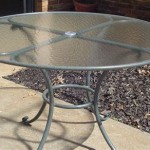Making Your Own Wood Patio Furniture
Building custom patio furniture offers a rewarding way to personalize outdoor spaces while potentially saving money. This process allows for complete control over design, material selection, and dimensions, ensuring the furniture perfectly complements the existing aesthetic and available space. This article provides a comprehensive guide to crafting durable and attractive wood patio furniture.
Planning and Design
Careful planning is crucial for a successful project. Begin by determining the desired furniture pieces, whether it's a simple bench, a dining set, or a more complex lounging arrangement. Accurate measurements of the intended location are essential to ensure the furniture fits comfortably and functionally within the patio area. Sketching the design, including dimensions, helps visualize the project and identify potential construction challenges beforehand.
Choosing the right wood is paramount for longevity and aesthetics. Consider the climate and exposure to the elements. Pressure-treated lumber offers excellent durability and resistance to rot and insects, making it suitable for outdoor use. Cedar and redwood are naturally weather-resistant choices known for their beauty and durability. Researching different wood types and their properties will inform the best selection for a specific project.
Gathering Materials and Tools
Creating a detailed list of required materials ensures a smooth building process. The lumber dimensions should align with the chosen design and planned structural integrity. Necessary hardware, such as screws, bolts, and fasteners, needs to be selected based on the wood type and the intended load the furniture will bear. High-quality exterior-grade wood glue adds strength and stability to the joints.
Assembling the appropriate tools is equally important. Essential tools typically include a saw (circular saw, miter saw, or handsaw), drill, measuring tape, square, sander, and clamps. Having the right tools readily available streamlines the construction process and contributes to a more accurate and efficient workflow.
Construction Techniques
Cutting the lumber to the correct dimensions is the first step in the construction phase. Following the design plan precisely ensures proper fit and assembly. Marking the wood clearly before cutting minimizes errors and material waste. Employing appropriate safety measures, such as wearing safety glasses and ear protection, is paramount throughout the construction process.
Assembling the furniture components involves connecting the cut pieces using appropriate joinery techniques. Common methods include butt joints, lap joints, and mortise and tenon joints. Each technique offers varying levels of strength and complexity. Selecting the right joinery method contributes to structural integrity and the overall aesthetic of the finished furniture.
Reinforcing joints with screws, bolts, or brackets adds significant strength and durability. Using exterior-grade wood glue in conjunction with mechanical fasteners further enhances the structural integrity of the furniture. Ensuring all joints are secure and aligned correctly is crucial for a stable and long-lasting finished product.
Finishing Touches
Sanding all surfaces smooth creates a professional finish and eliminates splinters and rough edges. Starting with coarser grit sandpaper and progressively moving to finer grits achieves a smooth and even surface. This preparation ensures the wood is ready for finishing and contributes to a more comfortable and aesthetically pleasing final product.
Applying a weather-resistant sealant or stain protects the wood from the elements and enhances its natural beauty. Multiple coats may be necessary for optimal protection. Allowing ample drying time between coats is essential for a durable and even finish. Choosing a sealant or stain specifically designed for outdoor use ensures long-lasting protection against moisture, UV rays, and insects.
Maintenance and Care
Regular maintenance helps prolong the lifespan of wood patio furniture. Cleaning the furniture periodically removes dirt and debris that can contribute to deterioration. Reapplying sealant or stain every one to two years, or as needed, maintains the protective barrier against weathering. Storing the furniture in a covered area during the off-season or inclement weather further protects it from damage and extends its lifespan.

Diy Patio Chair Plans And Tutorial Step By S Photos
:max_bytes(150000):strip_icc()/cherishedbliss-dcb2c5e4a8c64c12b0b16e85c88a22bd.jpg?strip=all)
23 Diy Patio Furniture Plans

Diy Patio Chair Plans And Tutorial Step By S Photos
:max_bytes(150000):strip_icc()/homemadebycarmona-386463f43539452b8b033a4108701959.jpg?strip=all)
23 Diy Patio Furniture Plans

Diy Patio Chair Plans And Tutorial Step By S Photos

Get Tons Of Tips Techniques S Guides For Woodworkers Start From Link Now Diy Outdoor Furniture Plans Patio

Diy Outdoor Seating Her Tool Belt

Diy Patio Chair Plans And Tutorial Step By S Photos

Build An Outdoor Sectional For Under 100 Gray House Studio

Plans Outdoor Sectional Woodworking To Build Your Own Seating An Sofa
Related Posts








